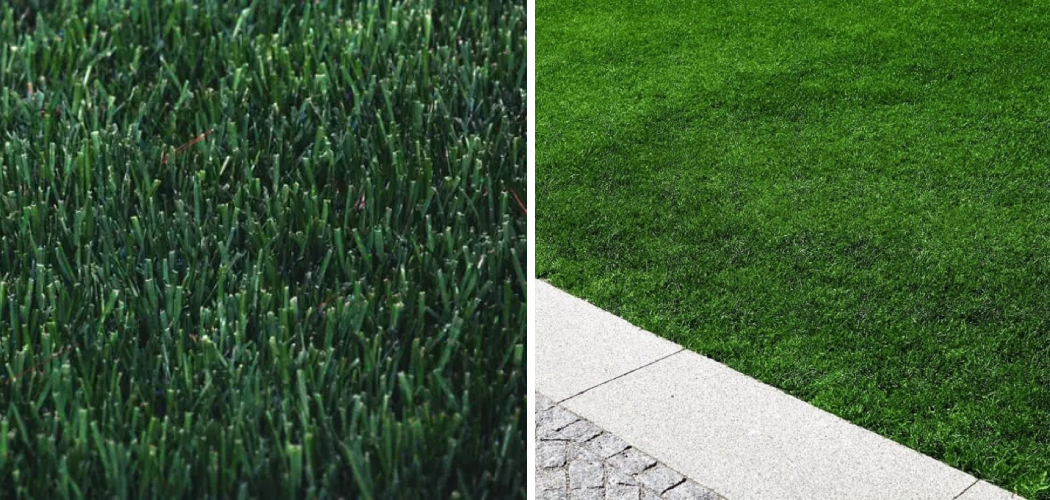Have you ever looked out your window and wished your lawn was greener? There’s something so inviting about a lush dark green lawn that draws the eye, but if yours has been looking dull and lackluster lately, don’t despair!
With just a few tips and tricks on how to make my grass dark green, you can take your grass from faded to full-bodied in no time.
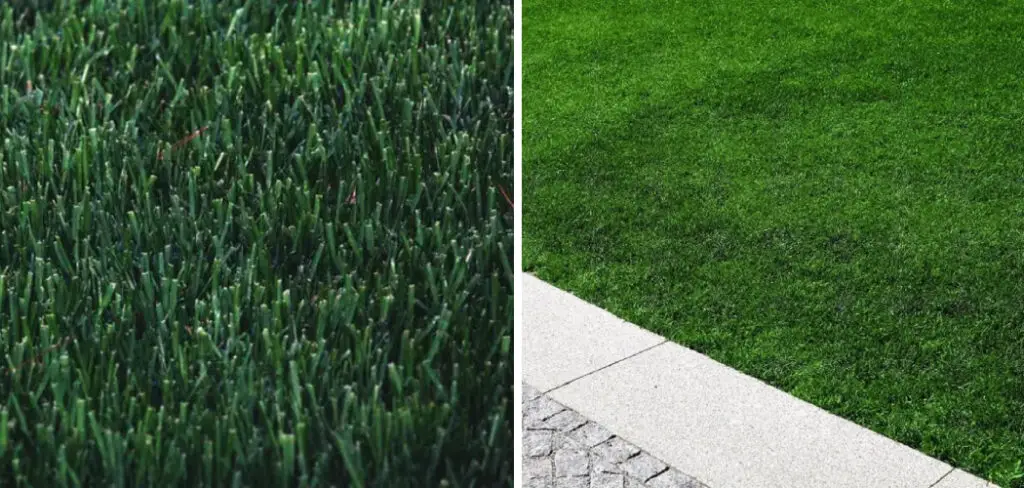
In this blog post, we’ll be exploring the best strategies for returning your lawn to its former green glory – from proper fertilizer use to pick the right timing for watering – so read on to find out how you can make those greens sparkle again!
Can You Do It Naturally?
The first step in making your grass dark green is to determine whether it’s possible to do so with natural methods. The truth is, if you have high-quality soil and regular access to sunlight, then it’s likely that you should be able to achieve a healthy level of green with only natural means.
The best way to do this is to ensure that your soil has adequate levels of nitrogen and other essential nutrients, as these will provide the foundation for healthy grass growth. You can test the nutrient levels in your soil with a soil testing kit to get an accurate reading – if you need to add more nutrients, look for natural sources such as compost or manure.
Needed Materials
Once you’ve established that your soil has the nutrients it needs to promote healthy grass, the next step is to determine what type of material you need to make your grass dark green. Depending on your current lawn conditions and what kind of grass you have, this could include any combination of fertilizer, seed, mulch, or topsoil.
For most people, a quality fertilizer is the best way to get started. Look for a product specifically designed for use on lawns, as this will provide your grass with all of the nutrients it needs in order to stay healthy and green.
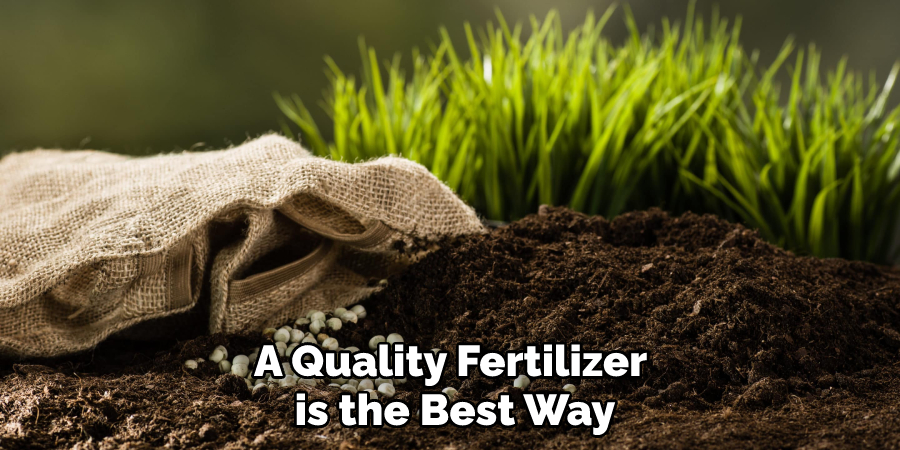
10 Tips on How to Make My Grass Dark Green
Step 1: Test the Soil Nutrient
Test your soil‘s nutrient levels. It is an important step that will help you determine which type of fertilizer to use and how much. That’s why it’s important to run a soil test before attempting to make your grass dark green.
Step 2: Choose the Right Fertilizer
Once you know the nutrient levels of your soil, you can choose an appropriate fertilizer for making your grass dark green. Look for one that is high in nitrogen, as this will help promote healthy growth and increase the color of your grass.
Step 3: Apply Fertilizer at the Right Time
Timing is key when it comes to fertilizing your lawn. For best results, apply fertilizer in the spring and fall – these are times when nutrients are most needed for healthy growth. The right fertilizer will provide a long-lasting boost to the greenness of your grass.
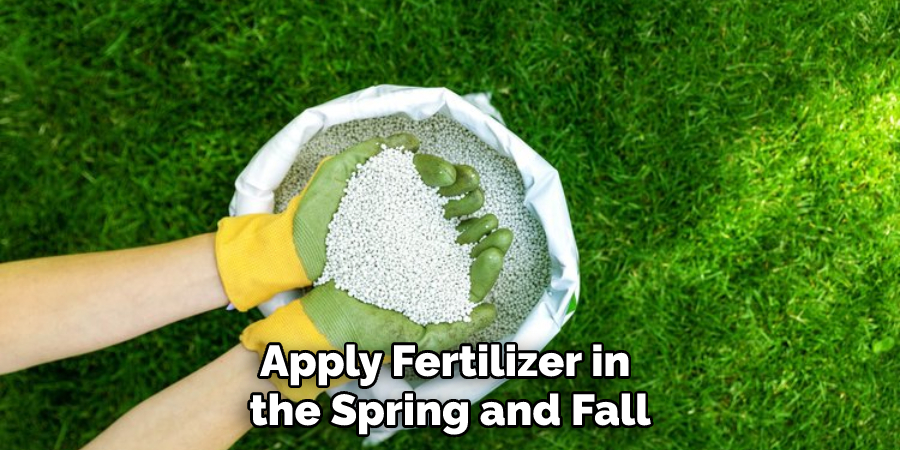
Step 4: Water Regularly
Grass needs water in order to stay healthy and, ultimately, dark green. How often you need to water will depend on the season and climate – during warmer months, it’s best to water once every three days or so for the best result.
Step 5: Mow Properly
Mowing your lawn should be done with care – too short, and you risk damaging the grass, but if it’s left too long then it can become patchy and uneven. Aim to keep your mowing height at between 2-3 inches for best results.
Step 6: Aerate the Soil
Aerating your soil can help to promote healthy grass growth, as it helps oxygen and nutrients reach the roots. It also helps prevent disease, which could otherwise cause discoloration or thinning of the grass. You can aerate by hand or use a machine that will do the job for you.
Step 7: Avoid Over-Fertilizing
While it’s important to fertilize your lawn in order to keep it dark green, you should avoid over-fertilizing. Too much fertilizer can cause the grass to become burned and discolored. Look for products that contain slow-release nitrogen instead of quick-release nitrogen.
Step 8: Remove Weeds and Moss
Weeds and moss can cause the grass to become patchy and discolored, so it’s important to keep them at bay. Regularly removing weeds and moss will help ensure that your grass stays dark green for longer.
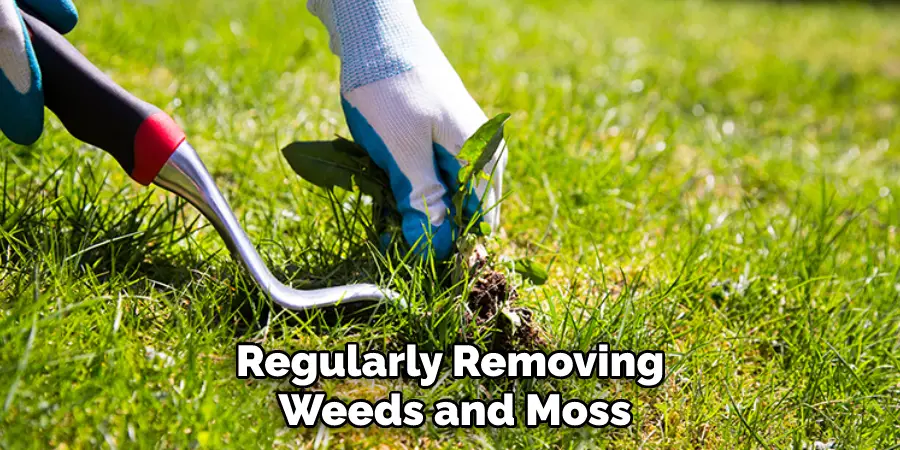
Step 9: Seed Bare Areas
If there are any bare spots in your lawn, these can be easily filled with grass seed. Be sure to purchase the right type of seed for your climate and conditions – this will help ensure that the grass is healthy and dark green once it begins to grow.
Step 10: Use Quality Mulch
Mulch helps to keep moisture in the soil and prevent weeds from growing. Use quality organic mulch such as bark chips, wood shavings, or straw to help keep your grass dark green for longer.
By following these steps, you can make sure that your lawn remains healthy and dark green all year round! With the right materials, regular maintenance, and a little bit of care, you can have a lush, beautiful lawn in no time.
Once you’ve followed the steps above and applied fertilizer, seed, mulch, or topsoil as needed, it’s important to keep up with regular maintenance. This includes mowing and watering regularly – both of which will help ensure that your grass stays dark green for
8 Maintenance Tips

- Keep up with regular mowing and watering. Regular mowing and watering will help promote healthy growth and keep your grass dark green.
- Use a quality fertilizer for the best results. You should look for one that is high in nitrogen, as this helps to increase the color of your grass.
- Apply fertilizer at the right time – typically in the spring and fall when nutrients are needed for healthy growth.
- Aerate the soil – this helps oxygen and nutrients reach the roots, which also helps promote healthy growth.
- Avoid over-fertilizing, as too much can cause the grass to become burned or discolored.
- Remove weeds and moss from your lawn regularly – this helps keep your grass dark green for longer.
- Seed bare areas, as this will help ensure that the grass is healthy and dark green once it begins to grow. It will also help prevent discoloration.
- Use quality mulch – this helps to keep moisture in the soil and prevents weeds from growing, which will help keep your grass dark green for longer.
By following these steps and maintaining a regular schedule of watering, fertilizing, mowing, and weeding, you can make sure that your lawn remains healthy and dark green. With the right materials, regular maintenance, and a little bit of care, you can have a lush, beautiful lawn in no time!
It’s important to remember that these steps aren’t just for making your grass dark green – it’s also about keeping your lawn healthy and in good condition. With regular care and maintenance, you can ensure that your lawn will remain dark green for years to come.
Frequently Asked Questions
What is the Best Nutrient for Dark Green Grass?
The best nutrient to use for dark green grass is one that is high in nitrogen. Nitrogen helps to increase the color of your grass, so look for products that contain slow-release nitrogen instead of quick-release nitrogen. The best time to apply fertilizer is typically in the spring and fall, when nutrients are needed for healthy growth.
How Do I Prevent Weeds from Growing?
Weeds can be a major problem when trying to keep your grass dark green. The best way to prevent them from growing is by using quality mulch such as bark chips, wood shavings or straws.
This helps to keep moisture in the soil and prevents weeds from growing, which will help keep your grass dark green for longer. You should also regularly remove any existing weeds or moss from your lawn.
Conclusion
In conclusion, learning how to make your grass dark green can be a daunting task. When tending to your lawn, it’s important to remember that all grass needs sunlight, water, and fertilizer for optimal health.
For areas of low light and dense shade, grasses such as fescue and perennial ryegrass are best suited. If your soil is infertile or poorly drained, then fertilizer must be used in order to facilitate healthy growth.
The type of fertilizer chosen should depend upon the pH balance of your soil so that the nutrients are released on time, and the grass can get all the vitamins it needs. An added bonus is aerating which will allow oxygen and water easier access to the root system of your lawn.
Following all these steps on how to make my grass dark green should guarantee you a remarkable-looking green lawn. After working hard maintaining your lawn, you will definitely experience great satisfaction looking out at a lush dark green carpet!

